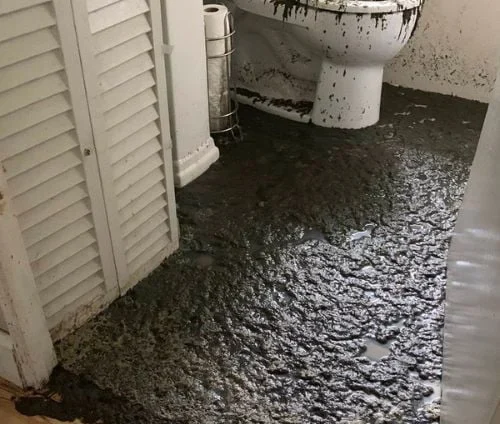Figuring out when to conduct air quality testing in your home shouldn’t be as complicated as it sounds. With concerns over health and well-being on the rise, ensuring the air in your sanctuary is clean and safe is essential. Let’s dive into the whys, whens, and hows of home air quality testing, breaking down this complex topic into manageable, easy-to-understand pieces.
Why Air Quality Testing Matters
The significance of air quality in our homes cannot be overstated—it directly influences our health, comfort, and quality of life. Contaminants such as mold, pollen, dust mites, and volatile organic compounds can deteriorate the air quality in our homes, leading to respiratory issues, allergies, and other health concerns. Regular air quality testing serves as a crucial preemptive measure, enabling us to identify these hidden adversaries and take necessary actions to mitigate them.
Beyond immediate health concerns, long-term exposure to poor indoor air can lead to more serious conditions like cardiovascular diseases and chronic respiratory problems. Understanding the invisible risks lurking in our living environments encourages us to take proactive steps towards creating a safer home. Air quality testing not only identifies these risks but also guides our efforts in improving ventilation, filtering air, and reducing pollution sources.
Key Indicators Your Home Needs Air Quality Testing
Several signs might indicate it’s time to conduct air quality testing in your home. Persistent odors, visible mold, excessive dust, and a history of water damage are tell-tale signs. Occupants experiencing frequent headaches, fatigue, or allergy symptoms such as sneezing, coughing, and irritation of the eyes, nose, or throat also highlight the need for testing. If your home falls within these parameters, consider scheduling a test to uncover potential air quality issues.
Another less obvious sign is a recent renovation or new furnishings, which can introduce harmful chemicals and VOCs into your home’s air. Even if your living space seems perfectly comfortable, having a baseline air quality test after moving into a new residence or updating your interiors ensures you’re not unknowingly exposed to health risks.
The Best Times to Test Your Home’s Air Quality
Ideally, air quality testing should be performed during different seasons to capture a comprehensive snapshot of your home’s air, as factors like humidity and heating can significantly affect readings. A general guideline suggests testing at least once every two to three years. However, if you notice any sudden changes in your health or the environment, such as after a home renovation or when moving into a new house, testing should be conducted more frequently.
Moreover, individuals with pre-existing health conditions or homes in regions prone to high pollen or pollution levels may benefit from more frequent tests. These tailored testing schedules ensure that the air quality interventions remain effective and responsive to both external conditions and the occupants’ specific health needs.
Understanding the Different Types of Air Quality Tests
Air quality testing encompasses various methods to detect different contaminants. Some tests target specific pollutants, such as radon, VOCs, or mold, enabling targeted interventions. Comprehensive tests offer a broader view, assessing multiple aspects of air quality, including particulate matter, humidity, and carbon dioxide levels. Deciding which test to opt for depends on your particular concerns, symptoms, or the condition of your home.
Professional assessments often provide the most accurate results, employing advanced technologies to measure air quality. DIY test kits, while more accessible, may offer a starting point for detecting certain pollutants, but they lack the precision and comprehensiveness of professional evaluations. In either case, understanding the scope and limitations of each type of test informs better decisions for improving indoor air quality.
Steps to Improve Your Indoor Air Quality After Testing
Improving your home’s air quality is a multi-step process, starting with addressing the specific issues identified through testing. If excess moisture is a problem, using dehumidifiers or addressing leaks can mitigate mold growth. For high levels of VOCs, removing or replacing the source of emissions, such as certain paints or furniture, is crucial. Regular cleaning, enhanced ventilation, and air purifiers can also significantly improve the overall air quality in your home.
Consider integrating indoor plants, known to naturally purify the air, and maintain your HVAC system regularly to ensure it’s not a source of contamination. These actions, complemented by ongoing vigilance and occasional re-testing, form the cornerstone of a sustainable strategy to protect your home’s air quality.
Professional vs. DIY Air Quality Testing: What’s Best for You?
Choosing between professional and DIY air quality testing hinges on the complexity of your air quality issues and the accuracy required. Professional testing is more thorough, providing detailed analysis and customized solutions, making it preferable for severe or persistent air quality concerns. DIY kits, on the other hand, are suitable for preliminary assessments or for individuals on a tight budget. They can offer a useful first step in identifying potential problems that may require further investigation.
Professional services, such as those provided by Onsite Pro, not only test but also offer remediation services, ensuring a comprehensive approach to indoor air quality. Considering these factors will help you make an informed decision on which testing method best suits your needs, ensuring the health and safety of your home’s occupants.
Wrapping Up: Breathe Easy Knowing Your Home’s Air is Safe
Understanding the importance of regular air quality testing in your home paves the way for a healthier living environment. By following the guidelines outlined, you can ensure that the air your family breathes is clean and free from harmful pollutants. Remember, the frequency of testing might vary based on your specific circumstances, but staying proactive about testing is key. Keep these tips and insights in mind to maintain a healthy and happy home. Ensure your living space remains a safe haven by exploring our range of solutions at Onsite Pro.






